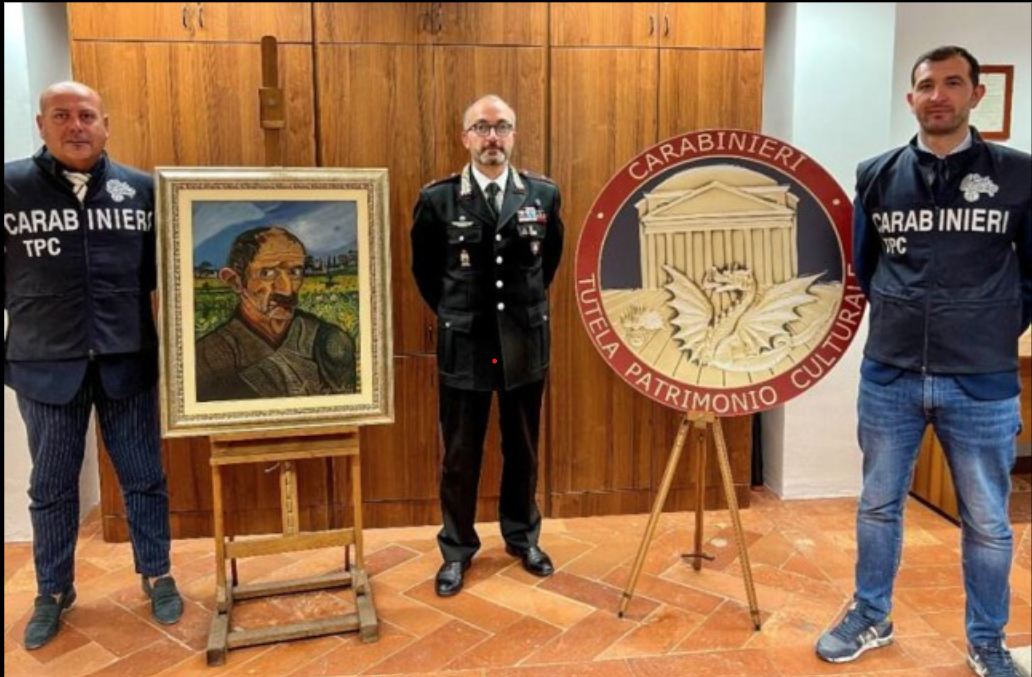On May 3, 1969, the General Command of the Italian Carabinieri established a highly specialized unit to protect the cultural patrimony of Italy. This elite unit is known today as Il Comando Carabinieri Tutela Patrimonio Culturale (TPC)- The Carabinieri Command for the Protection of Cultural Heritage. The unit was headquartered in a beautiful Rococo building, designed by the architect Filippo Raguzzini, that was built from 1727-1728 and faced the Piazza di Sant’Ignazio in Rome (in 1975 the headquarters of the Ministry of Cultural Heritage was established adjacent to the TPC HQs). Italy was the very first nation to establish a unit to protect artistic patrimony and to investigate cultural heritage crimes. Its founding predated by one year the UNESCO convention that guided states to prevent the trafficking and sale of artistic patrimony and recommended establishing law enforcement units that can do so.
Over the last 55 years, the unit has concentrated on stolen art, illicit archeological digs on land and at sea, looted antiquities, counterfeiting and art fraud, to name only a few. When first formed, this art squad had 17 personnel and today has over 200 well trained carabinieri that are assigned to a central command and 15 regional units. Each of these 15 branches are housed in beautiful historic buildings and are attached to or near buildings where the Ministry of Culture are based. This pairing of the TPC and Ministry of culture reinforces the dedication and cooperation of the two in carrying out their mission of protecting Italy’s cultural heritage.
The TPC has recovered hundreds of thousands of looted antiquities and stolen artworks over the last 55 years and has been awarded seven gold medals by the Ministry of Cultural Heritage for its dedicated and efficient work in protecting the Republic’s cultural heritage. Right from their first year of being established, the unit recovered stolen works by Vittore Carpaccio, Giovanni Bellini, Antonella da Messina and in 1975 two Piero della Francesca’s (The Flagellation of Christ and Madonna di Senigallia). They quickly proved their worth and importance in the safeguarding of precious Italian artistic treasures, treasures that are too invaluable to lose to the underworld where they could be lost forever.

Some recoveries that have been covered in the international press have been a red-figured attica kylix by Euphronios in 1995, Vincent Van Gogh’s L’Arlesienne and The gardener in 1998, a Calyx-Krater with a painting of the Rape of Europa on it in 2005, an attic red-figure calyx krater with the death of Sarpedon painted on it by Euphronios in 2008, the Morgantina Silver treasure in 2010, and the Venus of Morgantina in 2011.
Investigators of the TPC monitor the art markets and auction houses and pay astute attention to on-line sales and trading sites. Also, they have been curating popular exhibitions of recovered art works to help spread the message of the protection of artistic patrimony’s importance to the Republic.
They have worked tirelessly to investigate, arrest and convict tomb raiders “tombaroli” at illicit archeological digs as well as the traffickers of antiquities and have specialists in this area that investigate on land and under the sea conducting deep sea dives. This unit utilizes all terrain vehicles, boats, helicopters and horses. The TPC has invested in its investigators’ art educations and training, and these experts in their own right have formed valuable partnerships with the stakeholders in the art world such as art historians, art dealers, archeologists, and museum directors, curators and staff, to name only a portion of the large network that has been formed.

When first formed in 1969, they immediately started creating a hard copy archive of stolen art and looted works and any works known missing in Italy. They accumulated reports, info, and photos in this archive. They started digitalizing their files as early as 1980 because the sheer number of files and artworks in the archive started to take up too much room. Eventually they developed their digitalized efforts into the Leonardo Database for the online cataloguing. Leonardo is now the largest database of trafficked and stolen cultural property in the world. There are more than 1,230,000 art pieces in this registry with over 600,000 images. The creation and maintenance of this huge database is a great accomplishment that demands unending hard work.
The TPC has served in numerous international missions including NATO’s Kosovo Force and Antica Babilonia in Iraq and since February 16, 2016, have been central participants in the Italian division of UNESCO’s Unite4Heritage Task Force, an agreement signed by both UNESCO and the Italian Government to defend the cultural heritage of the world. And a United Nation’s resolution in 2017 enables the TPC to be deployed as cultural protectors on international peacekeeping missions.
Happy 55th Anniversary to the TPC of the Meritorious Corps (Arma Benemerita). They are the guardian-heroes of Italy’s cultural patrimony.











